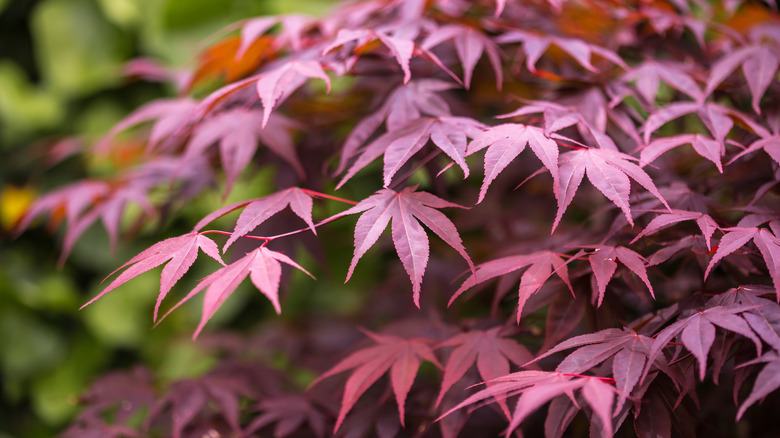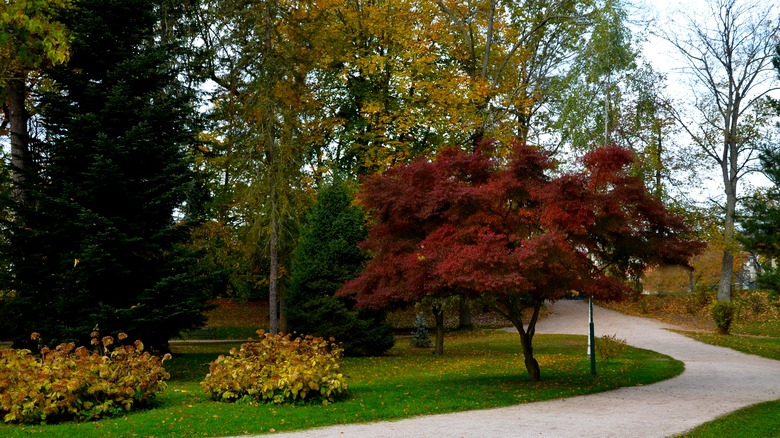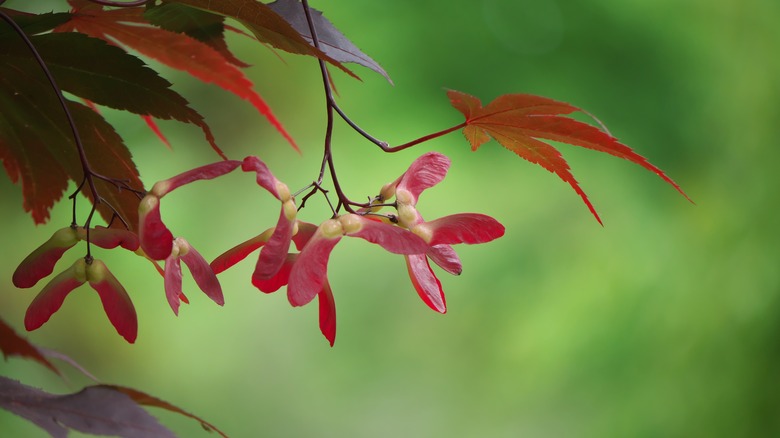Why Bloodgood Japanese Maple Trees Are The Perfect Addition To Your Summer Landscape
Landscaping is like slow-motion painting. You drop dollops of color into your yard with a mental projection of what it will look like when everything grows and fills in. Yet even with dozens of trees and shrubs to choose from, the Bloodgood Japanese maple (Acer palmatum 'Bloodgood') stands out in the crowd and is an amazing addition to your summer landscape.
Once you know how to grow and care for Japanese maple trees, you'll enjoy adding this relatively small ornamental to your yard. It stays a deep burgundy all summer before turning a brighter red in the fall. Unlike summer flowers, which wow us for a few weeks before fizzling out, the leaf color is a visual you can count on in the right conditions. Plus, it is a low-maintenance tree once established in partial shade.
Disease and pest concerns are limited, but keep an eye out for verticillium wilt, the common disease that can wreak havoc on your Japanese maple trees. And, aside from regular watering in the hottest parts of the summer, it doesn't need extra care to stay healthy. When planted in the right spot, the Bloodgood Japanese maple will thrive.
Designing with the Bloodgood Japanese Maple in mind
It is generally best to plant in spring when the weather is cooler and rain takes on the burden of watering the garden. Choosing what role the Bloodgood Japanese maple could play in your yard is an exercise in imagination and patience. Because of its deep burgundy color, it makes a better focal specimen than a background plant. When everything else is in full bloom, your Japanese maple will stand out so much more if you include glossy green or dark green plants behind it.
While the Bloodgood is naturally a multistem tree, it can also be sold as a single stem. Single-stem trees can be nice for showing off the light gray bark of the trunk and branches as well as building height for planting under. Homeowners planting into a bed or in a container might appreciate the extra shady space. When left to branch out, it takes on a rounded, layered shape. When happy in their environment, Bloodgood Japanese Maples can grow to be 15 to 20 feet tall and wide. Like many members of the maple genus, they produce samaras when they are done flowering. The dainty, bright red helicopters form in clusters where spring flowers have come and gone.
How to care for Bloodgood Japanese maples in the summer
When it comes to summer, the Bloodgood Japanese maple has a strong preference for partial shade. A little sun brings out the best leaf color, but too much or too intense and the leaves will become dry and ragged. Wind can also dry out their leaves, so protecting them with other, bigger trees is a helpful preventative measure. If they are in a spot that does receive a little more sun than they would like, you can try to combat the damage with diligent watering.
Good watering habits are the key to a healthy Bloodgood Japanese Maple. Rather than watering a little every day, it's best to water deeply and less often to keep the soil moist but not soaked. More isn't always better though. Overwatering can also cause issues, including verticillium wilt.
Verticillium wilt is a deadly fungal disease that can infect the tissues that move water throughout the tree. The virus lives in the soil but can travel up into the top branches. Well-draining soil can help prevent this. If you can confirm that you are seeing signs of the disease, pruning away the diseased branches is recommended. However, verticillium wilt can also enter the tree through a wound. String trimmers and poor pruning easily damage the thin bark of the Bloodgood, so be careful with summer maintenance. Being aware of mistakes to avoid while pruning your plants can save you some heartache.


